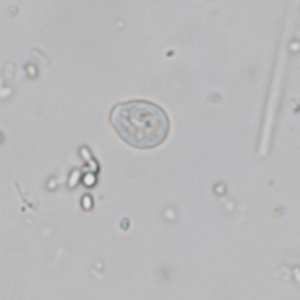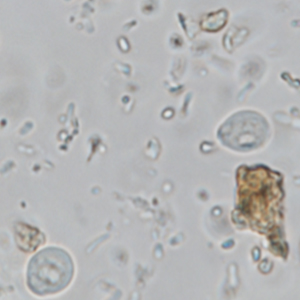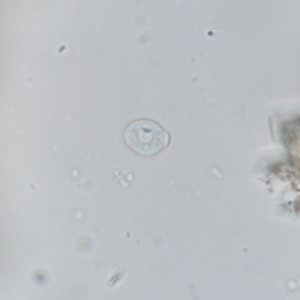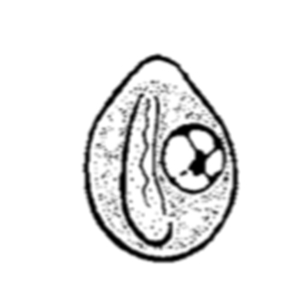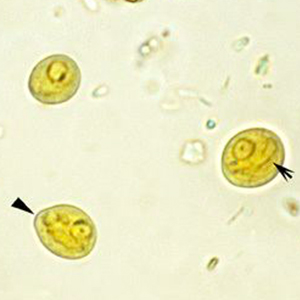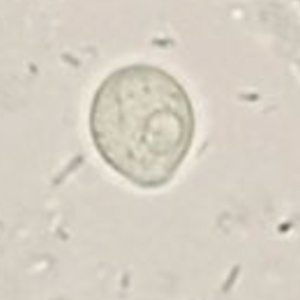Chilomastix mesnili is a flagellate protozoa of suids and primates. It is also known as Chilomastix suis and Chilomastix hominis (Taylor et al., 2016). It is the main species of Chilomastix found in non-human primates. The only other parasites of this genus described in non-human primates is Chilomastix tarsi, described in a tarsier 70 years ago (Porter, 1952). No other publications have mentioned this parasite onwards.
Epidemiology
Chilomastix mesnili is a cosmopolitan parasite, which is most often described in temperate climates. It has been described in macaques (Macaca mulatta, Macaca fascicularis), vervet monkeys (Chlorocebus sabaeus), baboons (Papio spp.), capuchin monkeys (Cebus and Sapajus spp.), common marmosets (Callithrix jacchus), orangutans (Pongo spp.) and chimpanzees (Pan spp.) amongst other species (Cogswell, 2007; Jeong et al., 2019). It is a zoonotic parasite.
Description
Chilomastix mesnili cysts are small (6 to 10 µm in diameter), pyriform and have a thin and refringent outer membrane. They have a subcentral nucleus and a cytostome containing its flagella. However, this structure is difficult to visualize (Garcia, 2021). Iron hematoxylin staining allows its proper visualization.
Differential diagnosis
The differential diagnosis for Chilomastix mesnili includes other protozoan cysts, namely other small flagellates, and amoeba cysts. It can be differentiated from these other protozoan cysts by the morphology and number of nuclei, and by the size of the cyst (Garcia, 2021). Iron hematoxylin staining is useful for the proper visualization of the organelles of this parasite. Coproculture can improve the diagnosis of Chilomastix mesnili by the evaluation of its trophozoite morphology.
Clinical significance
Infection by Chilomastix mesnili is usually asymptomatic in primates.
Prophylaxis and treatment
As a non-pathogenic parasite, contamination by Chilomastix mesnili does not require treatment, although metronidazole treatment (30 mg/kg PO q8h during 7 days) has shown to be effective in common marmosets (Callithrix jacchus) (Jeong et al., 2019). Nevertheless, hygienic measures need to be taken in case of diagnosis in a captive setting (Cogswell, 2007).
